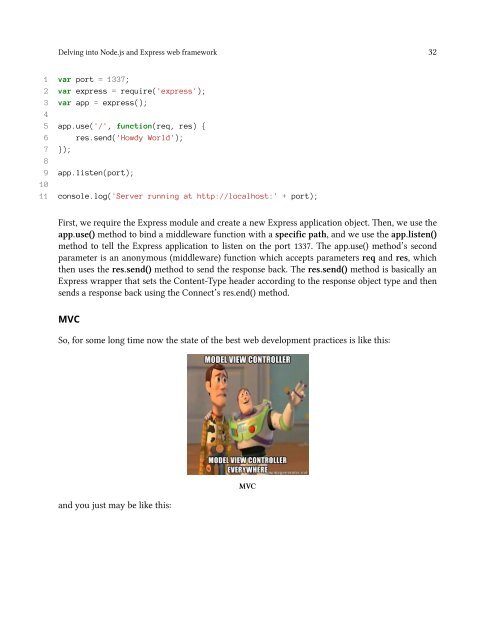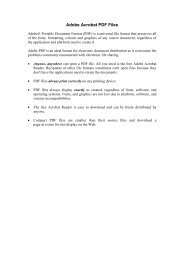Mittwoch, 18. Mai, 2016
You also want an ePaper? Increase the reach of your titles
YUMPU automatically turns print PDFs into web optimized ePapers that Google loves.
Delving into Node.js and Express web framework 32<br />
1 var port = 1337;<br />
2 var express = require('express');<br />
3 var app = express();<br />
4<br />
5 app.use('/', function(req, res) {<br />
6 res.send('Howdy World');<br />
7 });<br />
8<br />
9 app.listen(port);<br />
10<br />
11 console.log('Server running at http://localhost:' + port);<br />
First, we require the Express module and create a new Express application object. Then, we use the<br />
app.use() method to bind a middleware function with a specific path, and we use the app.listen()<br />
method to tell the Express application to listen on the port 1337. The app.use() method’s second<br />
parameter is an anonymous (middleware) function which accepts parameters req and res, which<br />
then uses the res.send() method to send the response back. The res.send() method is basically an<br />
Express wrapper that sets the Content-Type header according to the response object type and then<br />
sends a response back using the Connect’s res.end() method.<br />
MVC<br />
So, for some long time now the state of the best web development practices is like this:<br />
and you just may be like this:<br />
MVC
















